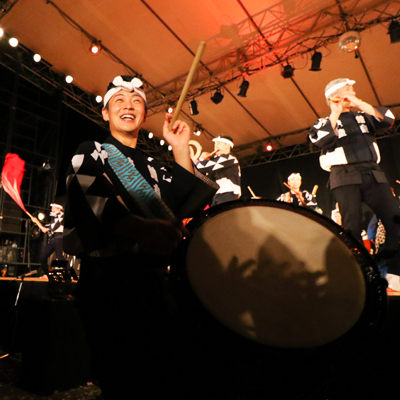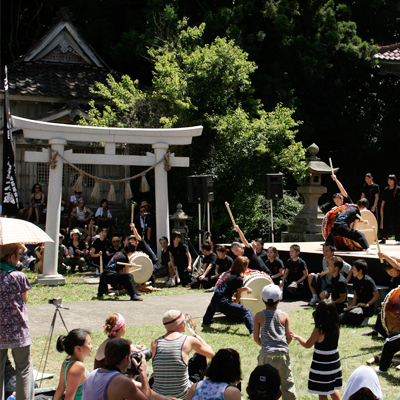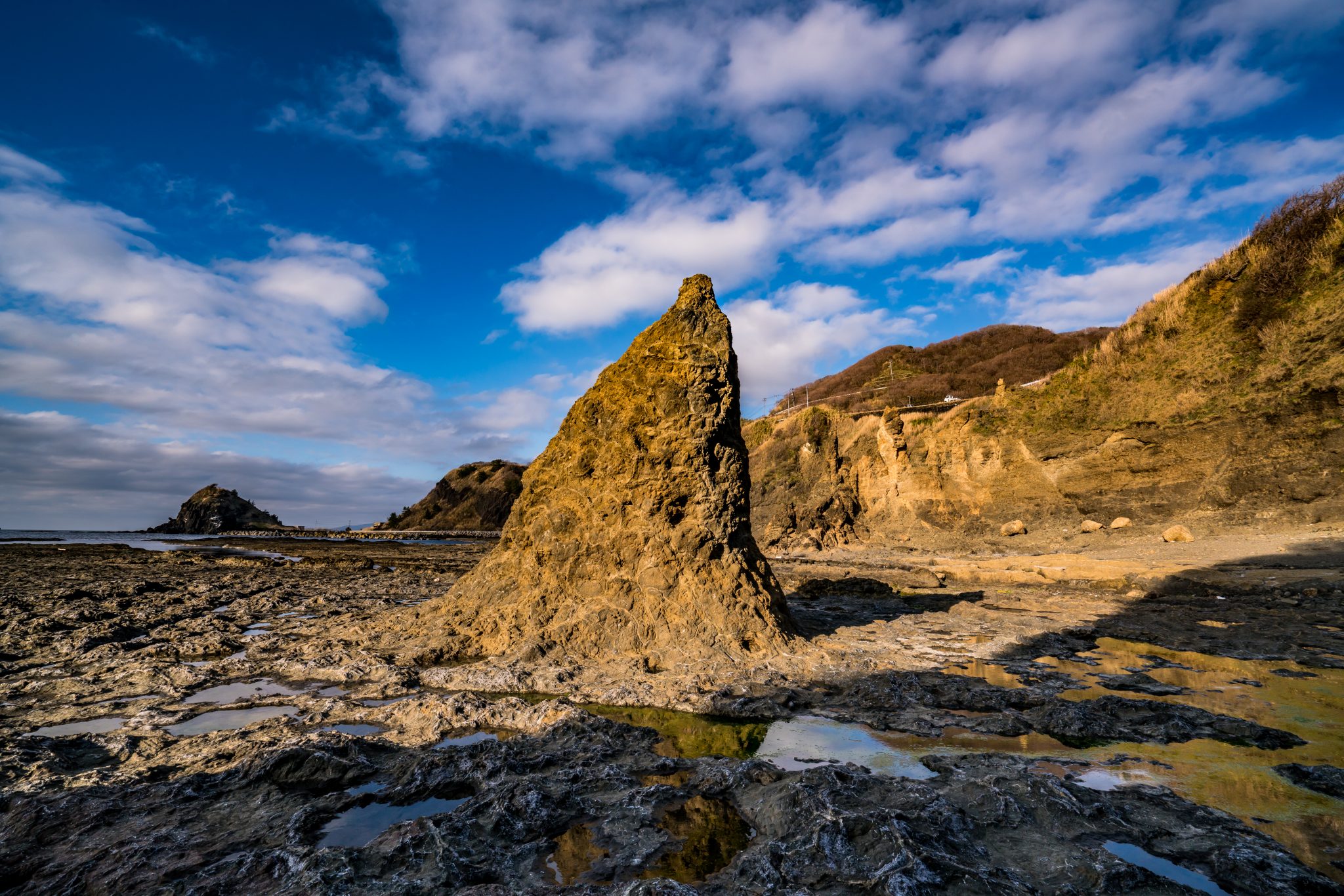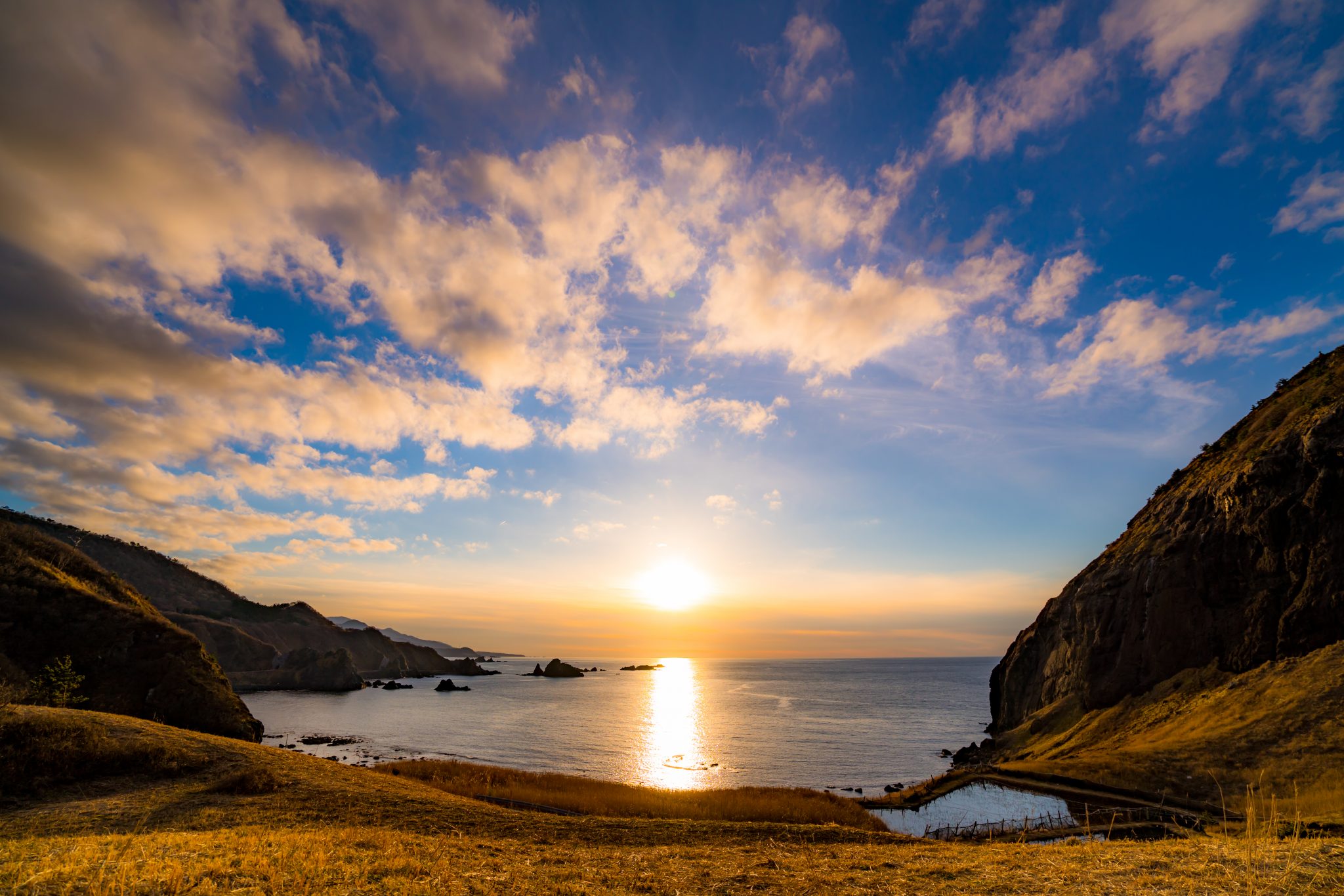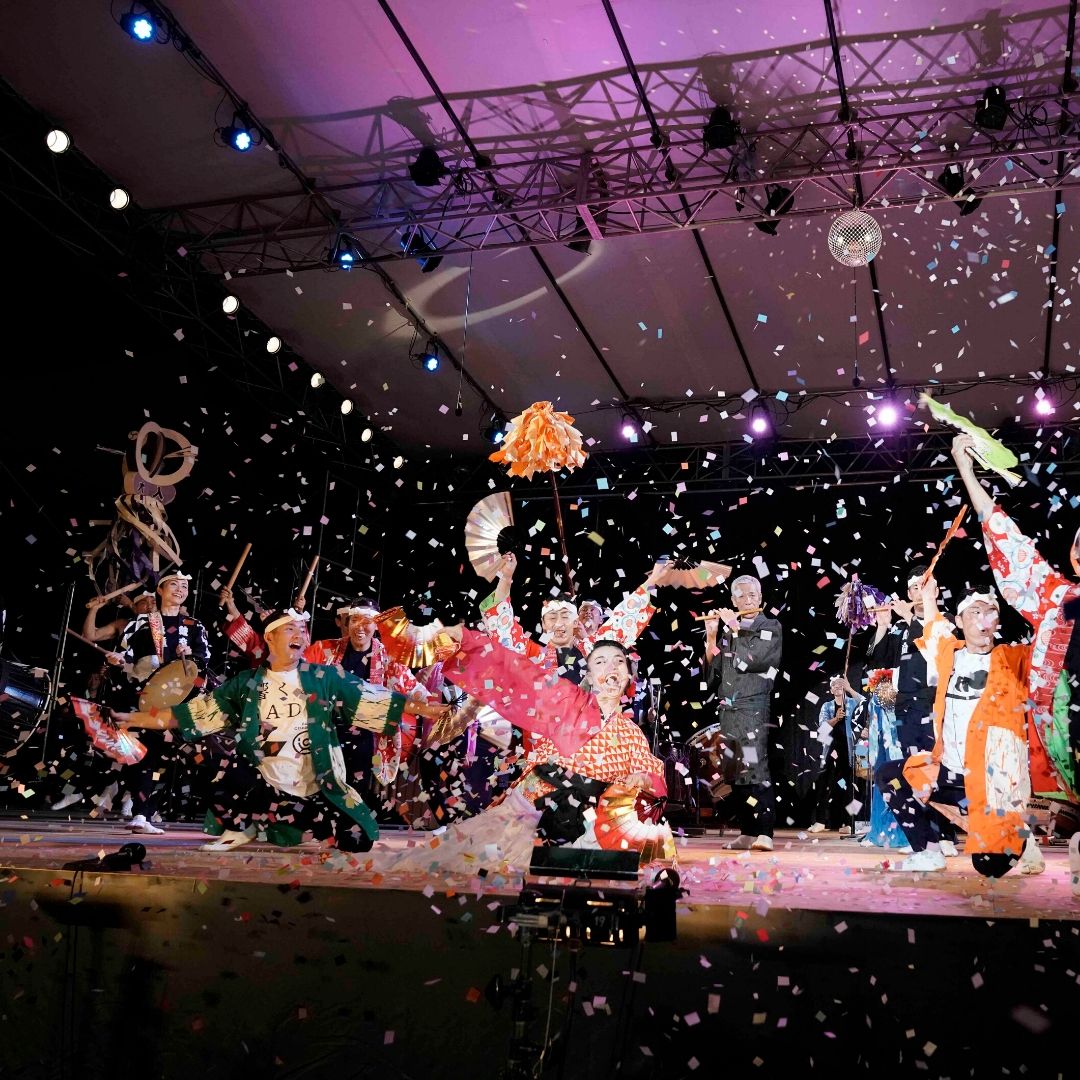ABOUT SADO ISLAND
Home to Earth Celebration, Sado Island has a circumference of 260 kilometers and an area of 854.6 square kilometers. Most people think Sado is a tiny island floating in the Sea of Japan, so many first-time visitors are surprised by the island’s considerable size. With a distinct four-seasonal climate and rich culture stemming from a colorful past, Sado Island is practically a miniature version of Japan itself, both culturally and climatically. Indeed, a trip to the island is like visiting a living museum.
One of Sado’s claims to fame throughout the country is that it’s the home to the Japanese crested ibis, or toki in Japanese. Now a protected species, the toki once roamed free in Sado’s rich, natural paradise, right up until the bird faced imminent extinction in the early ’80s. Formerly, toki could be found living throughout Japan. But due to excessive hunting and destruction of their natural environment, numbers decreased dramatically until 1981, when the last five birds remained on Sado Island. These five survivors were taken into protective care, and thus toki vanished from Japanese skies. Since then, the inhabitants of Sado Island have gone to great lengths to restore the environment and make it suitable for toki to live safely, again. The introduction of feeding grounds for the birds, a decrease in the use of agricultural chemicals, and forest protection research were just some of the measures used to help restore the environment. Since 2008, toki bred in captivity have been introduced back into the wild, and these symbols of the island can finally be seen flying free once more.
Sado Island also has a rich history of widely varied cultural traditions. Through sea-trade and travel, visitors from all over the mainland brought a diverse mix of aristocratic, samurai, and merchant cultures to the island. The immortal Noh master Zeami was banished to the island, and as a result, Sado has the highest density of Noh stages of any location in Japan. A tour of the island’s many temples reveals traces of the famed Buddhist priest, Nichiren. You could plan a trip around Sado based solely on historical landmarks.
However, you can’t mention Sado without speaking of the island’s natural splendor. The rich and varied coastline. Lush greenery and azure skies. There’s simply nothing like it in Japan’s urban landscape, and summer brings many visitors to Sado to camp, hike, and hang out on the beaches.
Nature, history, culture, and resorts; there is so much to experience on Sado! We look forward to welcoming you to this magical place.

